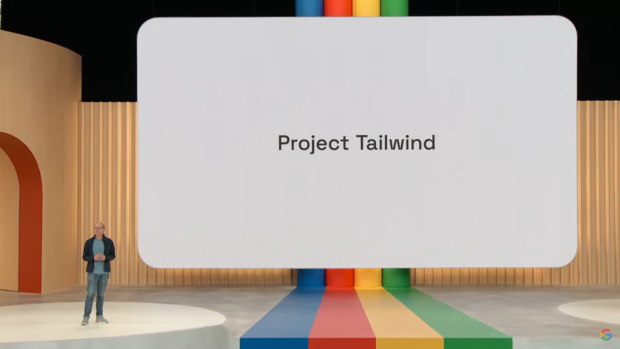If you’ve ever dreamed of having your own personal AI assistant like Jarvis from Iron Man, Google is offering a way to make that a reality. During its recent I/O conference, the company unveiled “Project Tailwind,” which allows users to train an AI model using their own data to create a virtual assistant. Currently, the project is in beta testing and is only available to users in the United States. This development marks another advancement in the field of artificial intelligence and highlights the growing prevalence of AI-powered products and services worldwide. In this article, we will explore how to test Project Tailwind on your mobile device and PC, as well as what sets it apart from other AI models like ChatGPT.
How to Try Project Tailwind 🪄📓
Project Tailwind is an AI-first notebook designed to enhance your learning experience by providing information that is tailored to your preferences and trusted sources. Please note that Tailwind is currently an experimental project and is only accessible to users in the United States. To join the waitlist for Project Tailwind, simply visit tailwind.sandbox.google.com/about on your phone or computer and click the “Join Waitlist” button. Once prompted, sign in to your Google account and follow the onscreen instructions to complete the registration process. Alternatively, you can follow the instructions provided by the tech news outlet 9to5Google, which suggests accessing the experimental feature through the beaker icon on the Google app.
Key Features of Google Tailwind
Google made several announcements regarding its artificial intelligence projects at the 2023 I/O Conference. In addition to integrating generative AI into its online search engine, the company showcased a demonstration of PaLM 2, the second iteration of its Pathways Learning Model. This large language model, which powers chatbots like ChatGPT, enables these AI systems to understand and generate text in multiple languages. During his presentation, Josh Woodward, a senior director of product management at Google, showcased Tailwind on stage. Although Woodward did not specifically mention the purpose of the AI model, he highlighted various use cases for the system. According to 9to5Google, Woodward mentioned that the system can be utilized by writers conducting research for articles, analysts reviewing earnings calls, or even lawyers preparing for cases. Additionally, it can assist anyone in synthesizing information from diverse sources. For example, you can submit your English lessons to Tailwind and utilize the Reading Quiz feature to generate a reviewer for your upcoming exams. Unlike most AI chatbots that rely on LLMs trained by large corporations, Google Tailwind leverages customer data to create a personalized AI assistant.
Upcoming AI Projects from Google
During the I/O event, Google also introduced several other AI systems in addition to Project Tailwind. These include an AI-powered image generation software suite, a feature that enables users to digitally try on clothes on YouTube, Maya (a 3D shoe fitting tool), a video summarization program, a wallpaper creation tool for Pixel phones, and an AI app builder. Additionally, Google has developed an AI system called MusicLM, which can generate music based on obscure descriptions and samples from humming and whistling. Their Lens app has also received AI-powered enhancements, such as the ability to identify nearby landmarks through your phone’s camera, diagnose potential skin conditions by scanning unusual rashes or blemishes, and assist with tasks such as homework and shopping.
In conclusion, Google Tailwind offers users the opportunity to create personalized AI assistants by utilizing their own data. This innovative technology has the potential to revolutionize daily tasks and is currently available for beta testing to users in the United States. As further testing, research, and development are conducted, it is likely that Google will expand access to Tailwind worldwide. Alternatively, there are other AI chatbot options available that perform similar roles. Stay updated with the latest digital trends from Inquirer Tech to learn more about these alternatives.
Frequently Asked Questions About Google Tailwind
1. Can I use Google Tailwind for free?
Yes, you can access the experimental version of Project Tailwind in the United States without any cost. However, it’s important to note that approval on the waitlist may take some time. Additionally, availability may expand to users outside the United States as further testing and development occur.
2. Is it recommended to use Google Tailwind?
While Google Tailwind provides insights into one of Google’s upcoming AI projects, it is currently in beta testing, which means it may contain bugs and errors. Therefore, it is advisable not to rely on this software for important tasks until the final version is released.
3. Will Google introduce an AI search engine?
In addition to Project Tailwind, Google has announced plans to incorporate generative AI features into its online search engine. This will involve replacing the traditional “10 blue links” layout with summary cards that compile information from top search results to provide quick answers to user queries. However, the company has not specified a release date for these features at the time of writing.
Denial of responsibility! VigourTimes is an automatic aggregator of Global media. In each content, the hyperlink to the primary source is specified. All trademarks belong to their rightful owners, and all materials to their authors. For any complaint, please reach us at – [email protected]. We will take necessary action within 24 hours.


